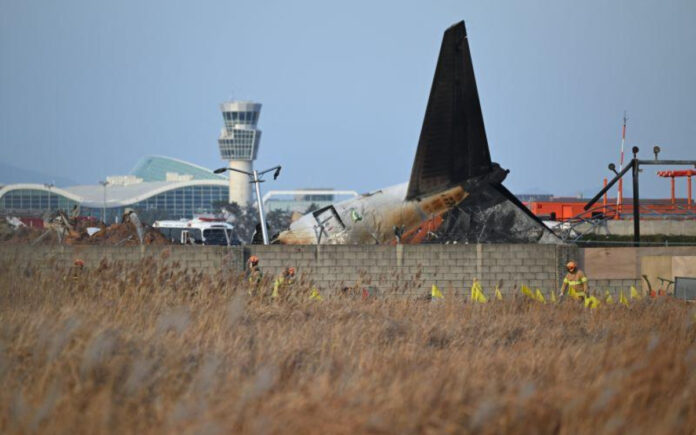Seoul: Investigators discovered bird feathers and blood in both engines of the Jeju Air jet that crashed in South Korea last month, leading to the deaths of 179 people, according to a source familiar with the investigation. The Boeing 737-800 aircraft, which had taken off from Bangkok, Thailand, was en route to Muan County in southwestern South Korea when it belly-landed, overshot the runway, and exploded after hitting an embankment.
Only two crew members survived the crash, which is considered the deadliest aviation disaster in South Korean history.
Around four minutes before the fatal crash, one of the pilots reported a bird strike and declared an emergency. The pilot attempted to go around and land on the opposite end of the runway, according to South Korean authorities. Two minutes before the Mayday emergency call, air traffic control had warned of “bird activity” in the vicinity.
Investigators reported this month that feathers were found on one of the engines recovered from the crash site, and video footage confirmed that a bird strike occurred on one of the engines.
South Korea’s transport ministry has declined to comment on whether feathers and blood were found in both engines.
Also Read | China Faces Third Consecutive Year of Population Decline: What’s Next?
The plane’s two black boxes, crucial for determining the cause of the crash, stopped recording about four minutes before the disaster, creating challenges for the ongoing investigation. Sim Jai-dong, a former transport ministry accident investigator, expressed surprise at the missing data, suggesting that all power, including backup systems, may have been cut off, a rare occurrence.
Also Read | Taiwan Warns Beijing: No Dialogue with Lai’s Administration Is Unacceptable
Bird strikes that affect both engines are uncommon in global aviation, but there have been notable instances where pilots successfully landed planes under similar circumstances, including the 2009 “Miracle on the Hudson” and a 2019 cornfield landing in Russia, both of which resulted in no fatalities.



